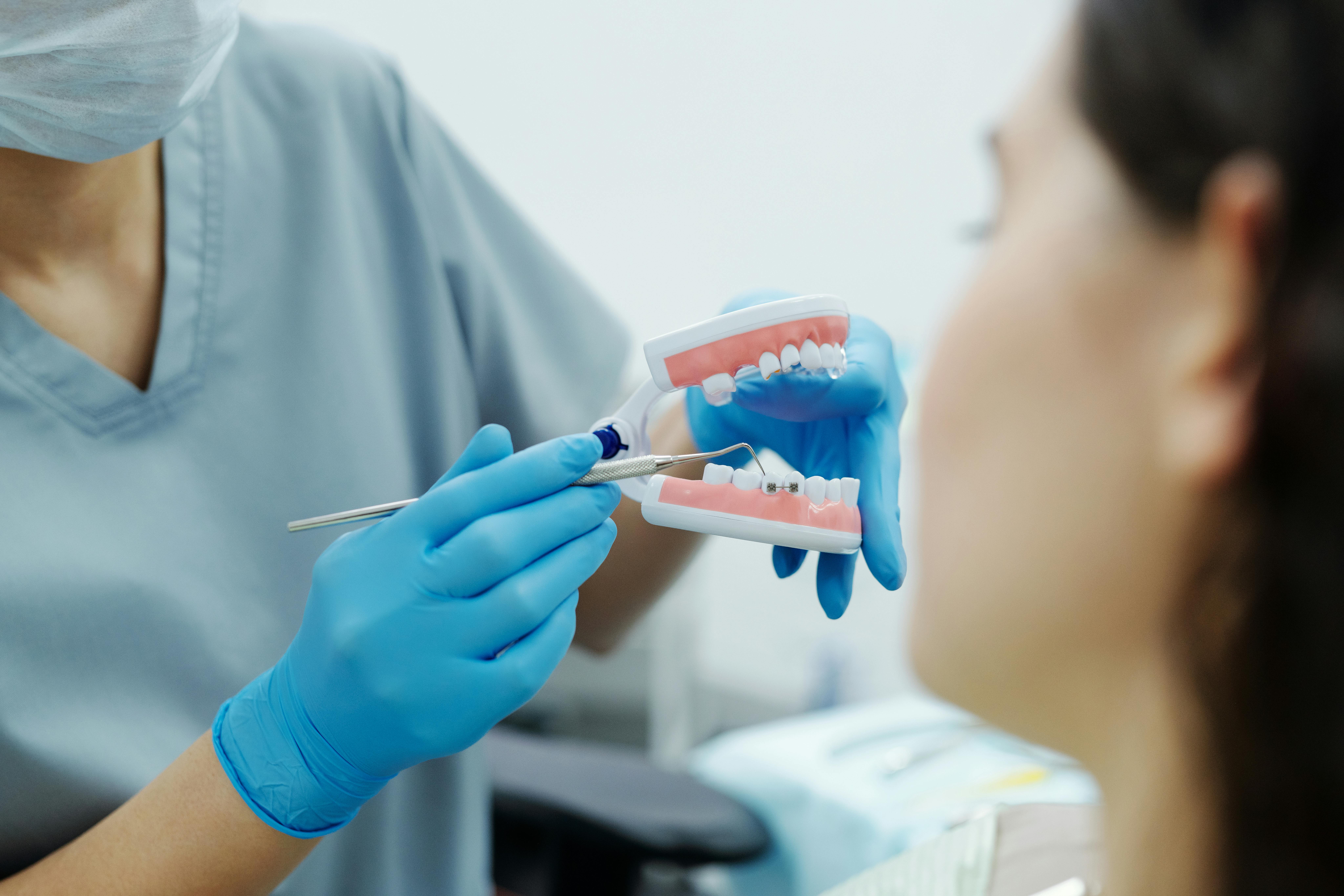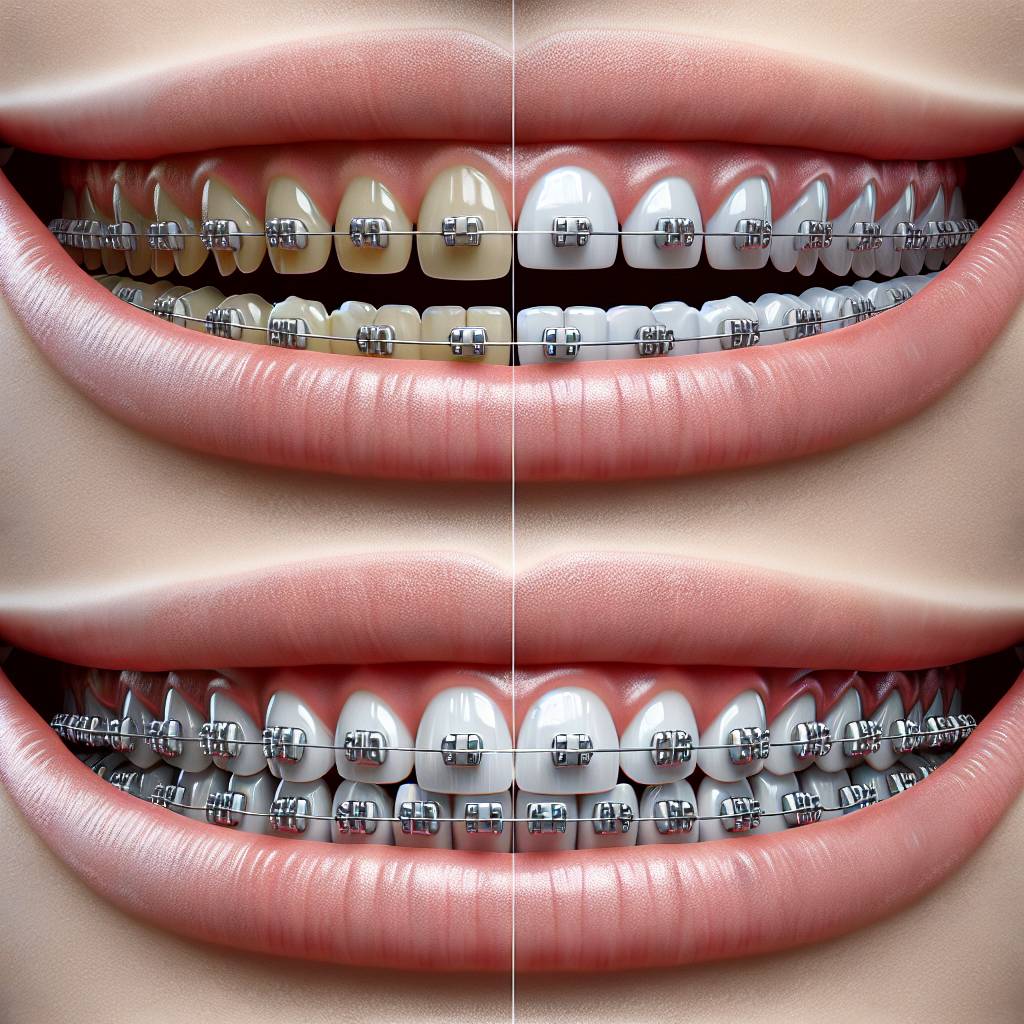Braces are a popular and effective way to straighten teeth, but how long it takes to see results can vary greatly depending on the individual. Generally speaking, the amount of time it takes for braces to straighten teeth can range from 6 months to 2 years or more. The treatment time depends upon the severity of the misalignment, the type of braces used, and how well the patient follows instructions from their orthodontist. Other factors such as age and lifestyle habits can also influence how long it takes for braces to work.The amount of time it takes for braces to straighten teeth will depend on the individual case. On average, it can take between one and three years. However, some cases may take longer or shorter than this depending on the severity of the misalignment.
What Are The Factors That Determine Braces Treatment Time?
The amount of time required to complete orthodontic treatment depends on a variety of factors. These include the severity of the misalignment of the teeth, the type and design of braces chosen, and the patient’s cooperation with the orthodontist.
The severity of misalignment plays a major role in determining how long it will take to achieve a desired outcome. If there is only minor crowding or spacing, braces may need to be worn for as little as six months. However, if there are more serious issues, such as overbite or underbite, treatment may take up to two years or more.
The type and design of braces also affects how long treatment may last. Traditional metal braces typically take longer than ceramic or clear braces because they require more frequent visits and adjustments. Invisalign is another option that is becoming increasingly popular because it relies on custom-made aligners instead of brackets and wires that are adjusted by an orthodontist. This type of treatment can be completed in as little as nine months but may take up to two years depending on the severity of misalignment.
Finally, patient cooperation plays an important role in determining how long it will take to complete orthodontic treatment. Strictly following instructions from an orthodontist such as wearing elastics and keeping appointments can help speed up treatment time significantly. Patients who fail to follow instructions may find that their treatment takes longer than expected.
In conclusion, there are many factors that play a role in determining how long it will take to complete orthodontic treatment including the severity of misalignment, type and design of braces chosen, and patient cooperation with their orthodontist. With proper care and patience, most patients can expect to have beautiful straight teeth in no time!
Traditional Braces
Traditional braces are the most popular type of braces and are made of metal brackets and wires. The brackets are attached to each tooth with a bonding material, and then metal wires are threaded through the brackets. As the wires are tightened, they move the teeth into their desired positions. Traditional braces can be used to correct a wide range of orthodontic issues, from overcrowding to crossbite. They’re also available in a variety of colors, so you can customize your smile.
Ceramic Braces
Ceramic braces are similar to traditional braces, but they’re made of clear or tooth-colored materials so they blend in more with your teeth. They use the same type of metal wires and brackets as traditional braces, but they’re less visible. Ceramic braces work best for minor orthodontic issues such as crooked or crowded teeth.
Lingual Braces
Lingual braces are placed on the backside of the teeth instead of the front side like traditional and ceramic braces, so they’re completely invisible when you smile. They use the same type of metal brackets and wires as traditional braces, but they’re custom-made to fit each patient’s mouth for maximum comfort and effectiveness. Lingual braces work best for minor orthodontic issues such as crooked or crowded teeth.
Invisalign
Invisalign is an alternative to traditional metal braces that uses a series of clear plastic aligners that fit snugly over your teeth. The aligners gradually shift your teeth into their desired positions without using any metal brackets or wires. Invisalign is virtually invisible when worn and can correct a wide range of orthodontic issues from overcrowding to crossbite.
How Do Orthodontists Monitor Treatment Progress with Braces?
Orthodontists use a variety of methods to monitor the progress of braces treatment, including x-rays and regular check-ups. X-rays allow the orthodontist to determine how well the teeth are moving and if any adjustments need to be made. During regular check-ups, orthodontists can assess how the braces are fitting on the teeth and whether there is any discomfort or other issues. They may also measure the amount of movement in each tooth to make sure that everything is progressing as it should. If necessary, they can make adjustments to ensure that treatment is effective and that results are achieved in a timely manner.
In addition to regular check-ups, orthodontists may also use computerized imaging technology such as 3D scans or intraoral cameras to monitor progress. This allows them to get a better look at how the teeth are moving and can provide more precise measurements than traditional x-ray images. It can also be used as a tool for patient education, allowing them to see their progress in real time.
Finally, orthodontists may ask patients to report any changes or concerns they have throughout their braces treatment so that they can respond quickly if necessary. This helps ensure that treatment stays on track and can help prevent unexpected problems from occurring. By monitoring progress regularly and responding quickly when needed, orthodontists can help ensure successful results from braces treatment.
Straightening Teeth with Braces
Straightening teeth with braces is a popular dental procedure that can improve the appearance of your smile and oral health. Orthodontic treatment with braces can help correct misaligned teeth and improve the overall alignment of your bite. Straightening teeth with braces can also help protect your teeth from further damage due to overcrowding or incorrect positioning. Additionally, braces can reduce the risk of gum disease and jaw joint disorders, as well as make it easier to clean your teeth.
The benefits of straightening teeth with braces include improved appearance and self-confidence, better dental hygiene, improved chewing and speaking ability, and improved overall oral health. With braces, you can have a straighter, more attractive smile that will look great in pictures or when speaking in public. You’ll also be able to practice better oral hygiene by being able to floss properly around crooked or crowded teeth. Additionally, if you suffer from TMJ (temporomandibular joint) disorder or other jaw pain due to misalignment of the jawbone, orthodontic treatment may provide relief by correcting the position of your bite.
Overall, straightening teeth with braces is an effective way to improve the appearance of your smile while protecting your dental health. If you are considering orthodontic treatment for yourself or a child, it is important to speak with an experienced orthodontist who can evaluate your individual needs and create a personalized treatment plan that will give you the best results possible.

Possible Complications of Braces Treatment
The process of getting braces can cause some discomfort, but for the most part, the treatment is fairly straightforward. However, there are some potential complications that can arise from having braces. Some of the most common complications include gum irritation, tooth decay, and root resorption.
Gum irritation is one of the most common complications associated with braces treatment. This occurs when the brackets or wires irritate or rub against the gums, causing them to become red and inflamed. If this occurs, it’s important to speak to your orthodontist as soon as possible so they can adjust your braces and help alleviate any discomfort.
Tooth decay is another potential complication of braces treatment. This occurs when food particles become trapped in between the brackets and wires. Without proper cleaning, bacteria can build up on these particles and cause tooth decay. To prevent this from happening, it’s important to brush and floss regularly and use a waterpik or other oral irrigator to clean around the brackets and wires.
Root resorption is another possible complication associated with braces treatment. This occurs when the roots of teeth start to break down due to pressure being applied by the braces during treatment. In some cases, this can lead to permanent damage if not caught early enough by an orthodontist. Generally speaking, root resorption is not a common complication but it is one that should be monitored closely during treatment in order to prevent any permanent damage from occurring.
Overall, while there are some potential complications associated with getting braces, they are usually minor and can be easily managed by working with your orthodontist throughout treatment. By taking good care of your teeth and closely monitoring your progress during treatment you should be able to avoid any major issues or complications arising from wearing braces.
Brushing and Flossing
Caring for your teeth while wearing braces is just as important as it is outside of treatment. It is important to brush and floss twice daily to keep your teeth and gums healthy and free from plaque buildup. When brushing, be sure to use a toothbrush with soft bristles and an ADA-approved fluoride toothpaste. Additionally, it is important to floss at least once per day using an interdental brush or floss threader. This will help remove plaque from hard-to-reach areas around the brackets and wires.
Avoid Certain Foods
It is important to avoid certain foods that are difficult to clean off of teeth and can break or loosen brackets or wires. These foods include sticky candies, popcorn, hard candy, nuts, gum, and chewy food like gummy bears. It’s also best to limit sugary snacks like cookies or chips as these can cause cavities.
Routine Checkups
Regular dental visits during orthodontic treatment are necessary for making sure that your teeth are healthy throughout the process. Your dentist may suggest special cleaning techniques for cleaning around the brackets or may use special tools like a water pick or rubber tip stimulator to clean between your teeth. Your dentist can also check for any issues such as cavities or gum disease that may have occurred during orthodontic treatment.
Mouthguard During Sports
If you play sports, it’s important to wear a mouthguard in order to protect your braces from injury. A custom-fitted mouthguard can be provided by your dentist in order to give the best fit and protection possible during sports activities. Make sure you rinse your mouthguard after each use with cold water in order to keep it clean.
By following these tips, you can ensure that your teeth stay healthy while undergoing orthodontic treatment!
Avoiding Hard and Sticky Foods
When wearing braces, it is important to avoid hard and sticky foods. Hard foods such as nuts, hard candy, and ice can damage the brackets on your braces or even cause them to come loose. Sticky foods like gum and caramel can also get stuck in the brackets and wires, making it difficult to clean your braces. In addition, sugary snacks can lead to cavities. Therefore, it is important to avoid these types of foods when wearing braces.
Brushing and Flossing Regularly
It is also important to brush and floss regularly when wearing braces. Food particles can easily get stuck in the brackets and wires of your braces, so brushing after every meal is essential for maintaining healthy teeth and gums. Flossing every day will help you remove plaque from between your teeth that may be difficult to reach with a toothbrush.
Attending All Orthodontic Appointments
In order to ensure that your braces are working properly, it is essential that you attend all of your orthodontic appointments. At these appointments, your orthodontist will check the alignment of your teeth and adjust the tension of the wires accordingly. This will help ensure that your teeth are moving in the right direction for a perfect smile at the end of treatment.

Conclusion
When it comes to how long it takes for braces to straighten teeth, the answer is not a simple one. It depends on the severity of the misalignment, the type of braces used, and other factors. In general, braces are usually worn for between 18 months and three years. In some cases, treatment may take longer than three years and require more frequent visits to the orthodontist. For mild misalignment, however, treatment may take less time.
It is important to note that everyone’s treatment time is different and will depend on their individual circumstances. It’s best to speak with an orthodontist to get an accurate estimate of how long it might take for your braces to straighten your teeth.
No matter how long it takes for your braces to do their job, you can rest assured that the results will be worth waiting for! With patience and a good orthodontic plan in place, you can look forward to beautiful, healthy-looking teeth.

